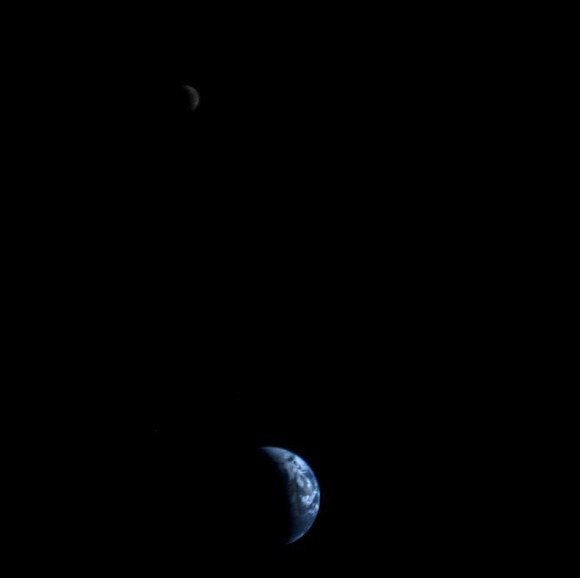Mega coolness!

Never before have astronomers been able to see individual stars inside an external spiral galaxy over such a large contiguous area.
Hubble’s high-definition panoramic view of the Andromeda Galaxy | Astronomy.com.
Sunsets, Stars, West, Wind
Mega coolness!

Never before have astronomers been able to see individual stars inside an external spiral galaxy over such a large contiguous area.
Hubble’s high-definition panoramic view of the Andromeda Galaxy | Astronomy.com.
http://earthsky.org/space/this-date-in-science-sept-18-1977-voyager-1-earth-moon-photo

37 years ago today.
Voyager to Earth: “Hello World!” or more likely “Goodbye World!”
Voyager is still sending us postcards from the edge though.
Gave me chills especially listening to the astronauts.
Posted from WordPress for Android via my Samsung smartphone. Please excuse any misspellings. Ciao, Jon
http://www.jpl.nasa.gov/m/news/news.php?release=2013-370#.UrI0yLhME0M
50 years ago Christmas Eve, unto us was born DSN.
Posted from WordPress for Android via my Samsung smartphone. Please excuse any misspellings. Ciao, Jon
http://earthsky.org/space/how-to-spot-the-international-space-station#.Upz_l7BME0M
I’ve seen the ISS a couple of times thanks to the Heavens Above website as well.
Posted from WordPress for Android via my Samsung smartphone. Please excuse any misspellings. Ciao, Jon
10 Years Of Earth’s Weather From Space, In One Mesmerizing Video
Cool video to watch.

I heard the news of Dr. Sally Ride’s passing when I got home from work last night. I stared, stunned and saddened, at my tablet’s screen as I read about her 17-month battle against pancreatic cancer.
Her name took me back nearly thirty years, to when she first blipped on my radar. Back in the late 70s and early 80s, I followed NASA’s shuttle program closely. I definitely remember her as the first American woman in space, because that same year I graduated from high school and pursued a college degree in one of the STEM (Science, Technology, Engineering, Mathematics) fields of study. I began in the fall semester of 1983 at Wichita State University as an electrical engineering student, but ultimately transferred my focus to my first love, mathematics, and computer science.
I didn’t completely succeed in transferring my love for mathematics on to my offspring (regardless of gender). My son had an aptitude for mathematics, but a personality clash early with his high school teacher sabotaged any hope of the local school district fanning the fires of his math passion. Instead, he became an artist. My daughter loved chemistry, one of the few courses I struggled with in college. But her love for music and vocal performance overcame her desire to blow things up in a lab. Both disciplines required hard work, but she found music much more appealing and satisfying.
Sally Ride had a passion for “motivating girls and young women to pursue careers in science, math and technology.” She was “an advocate for improved science education,” and wrote “five science books for children: To Space and Back; Voyager; The Third Planet; The Mystery of Mars; and Exploring Our Solar System. She has also initiated and directed education projects designed to fuel middle school students’ fascination with science.” (NASA biography of Sally K. Ride).
My thoughts and prayers are with her friends and family during their time of grief. I will try to honor her memory through outreach programs via my local astronomy club that inspire the next generation of scientific pioneers.
May she soar through the stars in peace.